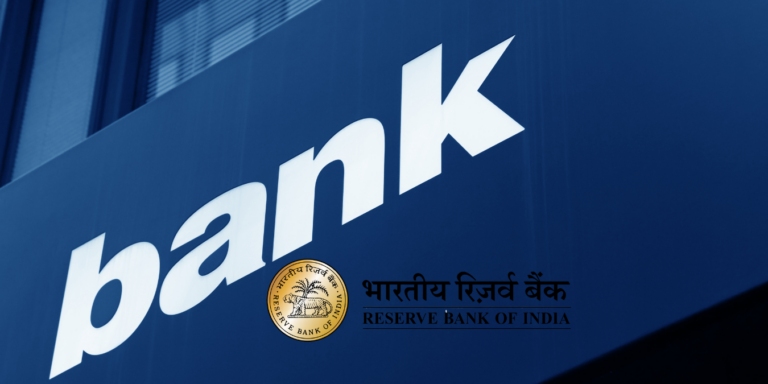
Bank of Maharashtra Q2 FY26 Results: The Smart Surge That Every Indian Investor Should Decode
A surprising twist in India’s banking story — Bank of Maharashtra’s Q2 profit jumped 23%, yet its stock dipped. Why are smart investors still bullish? Discover the hidden numbers, shocking insights, and future predictions that could redefine PSU investing in 2025. The truth might surprise you.
The Shocking Start
When the Bank of Maharashtra quietly dropped its Q2 FY26 numbers, few expected the public sector lender to deliver such a power-packed performance. Yet, a 23% year-on-year rise in net profit to ₹1,633 crore has made the market sit up and take notice. But here’s where it gets interesting — despite strong financials, the stock saw a surprising dip of over 3% on result day. Why would that happen when the fundamentals look this solid? That’s where the hidden story lies — and what it means for investors like you.
Let’s decode the real message behind those glowing numbers.
Key Highlights — At a Glance
- Net Profit: ₹1,633 crore (up 23% YoY)
- Net Interest Income (NII): ₹3,248 crore (+15.7% YoY)
- Return on Assets (RoA): 1.82%
- Net NPA ratio: only 0.18%
- Provision Coverage Ratio (PCR): 98.34%
- Capital Adequacy Ratio (CAR): 18.13%
- Cost-to-Income Ratio: 37.1%, one of the best among PSBs
These aren’t just numbers — they tell a story of efficiency, control, and confidence in a rising interest rate environment.
The Story Behind the Numbers: A Deep Dive
Profitability That Stands Out
In a quarter when several banks are struggling to maintain margins, the Bank of Maharashtra (BoM) saw a 23% leap in profit and a 17% rise in operating income. Total income surged to ₹7,973.86 crore. The bank’s operating profit crossed ₹2,500 crore, even with rising deposit costs.
This wasn’t luck. It was a result of tight control on expenses, growing advances (+17%), and declining NPAs. The bank’s operating efficiency — reflected in its cost-to-income ratio — improved from 38.8% to 37.1%, showing that every rupee is now working harder.
The Smart Shift: Lower NPAs, Higher Confidence
The biggest takeaway for long-term investors is the quality of assets. The Gross NPA ratio dropped to 1.72%, while Net NPA stayed at just 0.18% — levels that even some private banks struggle to match.
Provisions fell 12.9% quarter-on-quarter to ₹755 crore, freeing more capital for growth. In the words of the management, “Our high provision coverage ratio gives us enough comfort to pursue aggressive expansion without compromising safety.”.
This strength in asset quality is the hidden reason why FIIs and mutual funds have quietly increased their stakes in the bank. FII holdings rose from 0.39% to 2.58% over the last year.
The Growth Engine: Beyond Maharashtra’s Borders
Bank of Maharashtra has long been seen as a regional player. But the winds are changing.
With its ‘Project 321’ plan to open 321 branches outside Maharashtra within 18 months, and 1,000 branches in 5 years, the bank is going national with purpose. This expansion will not only deepen its reach but also diversify risk across geographical and sectoral lines.
The bank’s loan book grew by 17%, led by a 37% surge in retail advances — a space previously dominated by private players. It’s now catching up, strategically targeting professionals, high-net-worth individuals (HNIs), NRIs, and MSMEs.
The Margin Puzzle — A Hidden Concern?
Here comes the twist. While profits shot up, the Net Interest Margin (NIM) slipped marginally to 3.85% from 3.98% last year. Why? The answer lies in deposit competition and the Reserve Bank’s recent moves on repo-linked lending.
With nearly 40% of BoM’s portfolio tied to repo rates, downward revisions in policy rates directly pressured the bank’s yield. Even as the cost of funds rose slightly due to aggressive mobilization of deposits, NII still managed to hold steady.
The bank expects margins to stabilize around 3.75% going forward — modest but respectable for a PSU bank.
For investors, this signals prudent management — avoiding reckless growth just to maintain optics.
Digital Surge: The Quiet Catalyst
While the headlines focus on profit growth, digital transformation is the secret sauce. BoM has revamped its mobile app, introduced digital Kisan Credit Cards (KCC), MSME loan portals, and AI-based credit assessment tools.
This blend of fintech innovation with PSU trust is propelling CASA (Current Account Savings Account) deposits and low-cost customer acquisition. The digital-first focus is now central to its growth playbook.
Market Reaction — Why Did the Stock Fall?
Here’s where investors got nervous. Even with strong numbers, the share price dipped 3–5% post results. The reaction was likely due to two things:
- Profit booking: The stock had rallied over 60% in the previous six months ahead of results.
- Concerns over margin compression: Sequential NIM moderation triggered caution among short-term traders.
However, smart investors know that such dips can be opportunities. Institutional investors are increasing exposure precisely during such phases — betting on long-term fundamentals.
Strategic Plans and the Future Outlook
BoM’s management has laid out a confident roadmap:
- Maintain CAR at 18% through a capital raise of ₹7,500 crore (₹5,000 crore equity).
- Expand advances by 17–18% annually.
- Keep credit cost below 1%.
- Launch new verticals for institutional deposits and co-lending partnerships.
Given its high ROA (1.82%), ROE (22.6%), and best-in-class PCR, the bank appears on a firm footing to deliver consistent double-digit growth over the next two financial years.
Competitor Check — Where Bank of Maharashtra Stands
| Bank | Q2 Net Profit (FY26) | NIM (%) | ROA (%) | Gross NPA (%) | PCR (%) |
| Bank of Maharashtra | ₹1,633 crore | 3.85 | 1.82 | 1.72 | 98.34 |
| Punjab National Bank | ₹2,325 crore | 3.16 | 0.94 | 4.67 | 80 |
| Canara Bank | ₹3,663 crore | 3.21 | 1.10 | 4.42 | 87 |
| Bank of Baroda | ₹5,553 crore | 3.36 | 1.18 | 3.21 | 89 |
Notice something? BoM punches above its weight in asset quality, profitability, and efficiency — giving bigger PSBs a run for their money.
What It Means for Investors
1. For Long-Term Investors:
This quarter reinforces the view that BoM is becoming a “smart PSU bank” — leaner, digital, and profitable. The consistent RoA above 1.8% and near-zero NPAs signal sustainable value creation rather than cyclical performance.
2. For Short-Term Traders:
The stock may stay volatile due to NIM compression fears, but the downside seems limited. Any correction below key support levels often invites institutional buying.
3. For Dividend Seekers:
With strong earnings visibility and maintained capital ratio, dividend payouts are likely to stay stable or rise in FY26.
Risks to Watch
- Rising deposit costs could narrow spreads if credit growth slows.
- Agricultural NPAs (10% of the segment) remain sensitive to monsoon and policy changes.
- Rapid branch expansion might compress short-term profitability.
But these are manageable in context with the bank’s positioning and strategic clarity.
Expert Sentiment Snapshot
Financial analysts describe BoM’s performance as reflective of a “triple play” — growth, digitalisation, and productivity. Many anticipate continued outperformance versus peers in FY26–27 if macroeconomic conditions remain steady.
S&P Global recently upgraded BoM’s international credit rating to BBB–, three notches higher than before — another sign of international confidence.
Smart Takeaways — Quick Recap
- Profit growth of 23% YoY to ₹1,633 crore.
- Asset quality: Among the cleanest in PSU space (Net NPA 0.18%).
- CASA and retail advances driving future scalability.
- Operational efficiency improving (Cost-to-Income down to 37.1%).
- FII and mutual fund participation rising — institutional validation.
- Short-term margin compression manageable; long-term trajectory strong.
Final Thought
If there’s one public sector bank rewriting the rules of transformation, it’s Bank of Maharashtra. From a regional lender to a high-performance growth story, BoM’s Q2 FY26 results echo a quiet revolution — where old-world banking meets digital efficiency.
Yes, the margin squeeze is real, and yes, the market punished it in the short term. But beneath that noise lies a smart, steady compounding story that serious investors can’t ignore. This is a PSU with private bank-like discipline, expanding ambition, and near-zero stress levels.
The hidden opportunity? When everyone else is chasing flashy tech stocks, this old guard is quietly compounding wealth under the radar. The next few quarters could well define whether BoM becomes India’s most admired PSU bank — or if investors miss the bus, yet again.
Disclaimer: The use of any third-party business logos in this content is for informational purposes only and does not imply endorsement or affiliation. All logos are the property of their respective owners, and their use complies with fair use guidelines. For official information, refer to the respective company’s website.

























